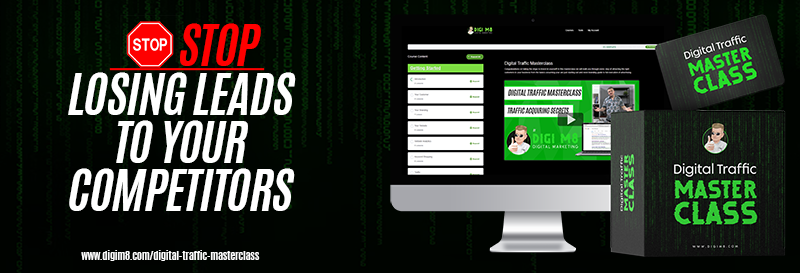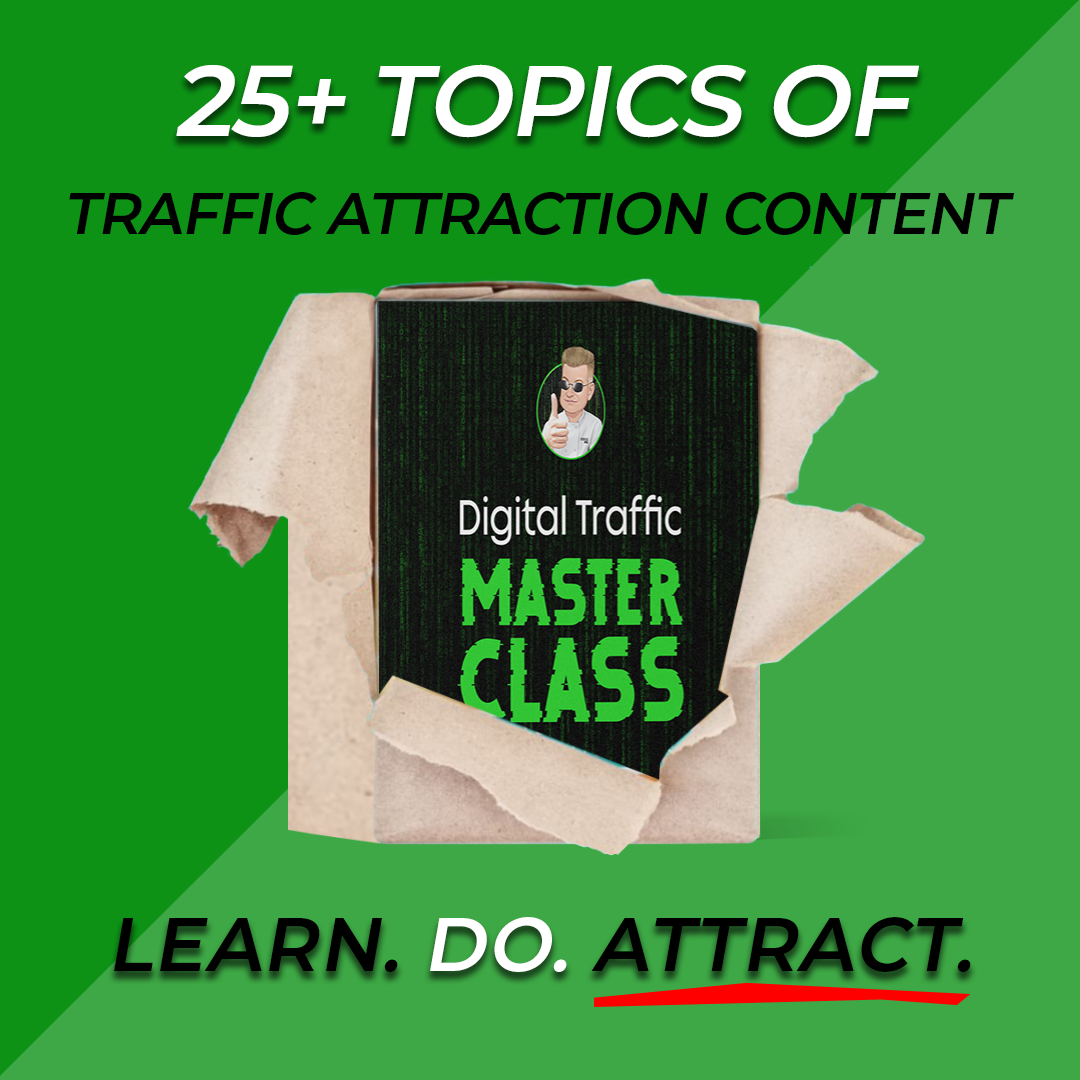Creating a compelling content marketing strategy is like assembling a well-crafted recipe. Each ingredient has its role, and the balance between them determines the success of the final dish. Whether you’re aiming to boost brand visibility, engage with your audience, or drive sales, a clear content marketing strategy is essential.
It serves as your roadmap, guiding you through the complexities of modern marketing and helping you navigate the evolving digital landscape. In this guide, we’ll break down the steps to build a content marketing strategy that resonates with your target audience and meets your business objectives.
From setting clear goals to analyzing metrics, let’s explore how to create a strategy that not only stands out but also delivers results.
What Is A Content Strategy?
Content strategy is fundamental in modern marketing, especially in a digital landscape overflowing with information. It involves planning, creating, managing, and measuring content to align with business goals and meet audience needs. A Content Marketing Institute survey in 2022 revealed that 73% of B2B marketers had a documented content marketing strategy, underlining the significance of a structured approach.
However, even with this structure, creating engaging and results-driven content remains challenging. Success requires a deep understanding of your audience, which leads to tailored content. HubSpot reports that 88% of marketers believe customizing content for specific buyer personas is highly effective.
In addition to audience-centric content, content strategy involves selecting appropriate formats to meet your objectives. While blog posts and articles are traditional choices, newer formats like videos, infographics, podcasts, and interactive content are increasingly popular. Wyzowl’s research indicates that 86% of businesses use video in their marketing, with 92% of marketers seeing it as a crucial part of their strategy.
Content distribution and promotion are equally vital, with social media platforms like Facebook serving as significant channels for reaching audiences.
According to Statista, Facebook had over 2.8 billion active users in 2023, making it a prime content distribution platform. A successful content strategy adapts to evolving market trends and audience behaviors, helping businesses build brand awareness and meaningful engagement.
How Can A Content Strategy Drive Business Growth?
Content marketing is a powerful tool that can drive business growth in multiple ways. It goes beyond traditional advertising by creating and sharing valuable content that resonates with your target audience. By doing so, businesses can build brand awareness, foster relationships, and ultimately increase sales. Let’s explore some of the key benefits of content marketing and how it contributes to business growth.
- Building Brand Awareness
Content marketing helps businesses reach a broader audience. By producing engaging and informative content, companies can attract new customers who are searching for solutions to their problems. Whether it’s through blog posts, social media, videos, or infographics, content marketing allows you to position your brand as a credible source of information. This increased visibility is often the first step toward business growth. - Establishing Authority and Trust
When businesses create content that educates and informs, they establish themselves as industry leaders. By sharing insights, expertise, and best practices, companies can build trust with their audience. This trust is a critical component of business growth because it encourages potential customers to choose your brand over competitors. As customers begin to view you as a reliable source of information, they are more likely to consider your products or services when making purchasing decisions. - Driving Traffic and Lead Generation
A well-executed content marketing strategy can significantly increase website traffic. By optimizing content for search engines (SEO) and promoting it on social media, businesses can attract a steady stream of visitors to their website. This influx of traffic creates more opportunities to capture leads through email sign-ups, contact forms, or downloadable resources. Lead generation is a crucial step in the sales funnel, ultimately leading to revenue growth. - Nurturing Relationships and Customer Loyalty
Content marketing isn’t just about attracting new customers; it’s also about nurturing existing relationships. By providing valuable content that addresses the needs and interests of your audience, you can keep customers engaged and loyal. This ongoing engagement can lead to repeat business and word-of-mouth referrals, both of which contribute to sustained business growth. - Supporting the Sales Process
Content marketing can also support the sales team by providing resources that help move prospects through the sales funnel. Case studies, whitepapers, and product guides are examples of content that can address common customer objections and questions. This support can shorten the sales cycle and improve conversion rates, further driving business growth.
What Are the Key Components of a Successful Content Marketing Strategy?
A successful content marketing strategy requires a blend of creativity, planning, and analytical thinking. To effectively engage audiences and meet business objectives, content marketers must focus on several key components.
Here’s an outline of these critical elements that together form a solid content marketing strategy.
- Defined Goals and Objectives
The first step in creating a successful content marketing strategy is to set clear goals. These objectives guide your content creation efforts and help measure success. Whether you aim to increase brand awareness, generate leads, or drive sales, your content should align with these goals. Setting specific, measurable, achievable, relevant, and time-bound (SMART) goals ensures that you have a clear direction and a way to track progress. - Understanding Your Audience
Knowing your audience is crucial for crafting content that resonates. This involves developing detailed buyer personas that encompass demographics, behaviors, pain points, and interests. By understanding who your audience is and what they care about, you can create content that addresses their needs and captures their attention. - Content Planning and Strategy
A well-structured content plan is the backbone of a successful strategy. This involves creating a content calendar that outlines what content will be produced, when it will be published, and through which channels. A consistent publishing schedule helps maintain engagement and ensures that you stay on track with your marketing goals. - Quality Content Creation
Quality is more important than quantity in content marketing. Content must be relevant, engaging, and valuable to your audience. This means using storytelling, visual elements, and interactive content to keep readers interested. High-quality content establishes your brand as a thought leader and builds trust with your audience. - Multi-Channel Distribution
To maximize reach, your content marketing strategy should include multiple distribution channels. This might involve social media platforms, email marketing, blog posts, videos, podcasts, and more. A multi-channel approach allows you to meet your audience where they are and increases the chances of content being shared. - SEO and Keyword Optimization
Search engine optimization (SEO) is essential for content visibility. A successful strategy includes keyword research, on-page optimization, and backlink building. By integrating SEO best practices into your content, you improve its ranking on search engine results pages, increasing organic traffic. - Analytics and Performance Tracking
Finally, a successful content marketing strategy requires ongoing analysis and adaptation. Use analytics tools to track key metrics such as traffic, engagement, conversions, and ROI. This data-driven approach allows you to identify what’s working and what needs improvement, enabling you to refine your strategy over time.
By focusing on these key components, you can create a content marketing strategy that not only meets your business goals but also resonates with your audience, ultimately driving success in the long term.
Which Content Formats Are Most Effective in 2024?
The digital landscape is constantly evolving, with new trends and technologies reshaping how businesses connect with their audiences. In 2024, several content formats are proving to be particularly effective for engaging customers and driving results.
Here’s an overview of the most impactful content types and the emerging trends that are shaping content marketing this year.
- Video Content: Video continues to dominate the content landscape in 2024. Short-form videos, like those on TikTok and Instagram Reels, capture attention with their quick, engaging snippets, while longer-form videos on platforms like YouTube allow for in-depth storytelling and product demonstrations. Brands that leverage video content effectively can boost their visibility and connect with a wider audience.
- Interactive Content: Interactive content is gaining traction as it encourages user participation. Quizzes, polls, interactive infographics, and virtual reality experiences offer a unique way to engage audiences. This type of content creates a more immersive experience, leading to higher engagement rates and increased sharing on social media.
- Podcasts: Podcasts are a rapidly growing format in 2024, offering a convenient and intimate way to reach audiences. Brands are using podcasts to share stories, discuss industry trends, and engage in thought leadership. The versatility of podcasts allows for a deep dive into various topics, attracting listeners who prefer audio content.
- User-Generated Content (UGC): UGC has become a powerful tool for building trust and authenticity. In 2024, brands are encouraging customers to create content that showcases their products or services. This approach not only increases brand credibility but also expands reach as users share their experiences with their networks.
- Social Media Stories: Stories on platforms like Instagram, Facebook, and Snapchat offer a dynamic way to share content in a format that disappears after 24 hours. This ephemeral nature encourages frequent interaction and creates a sense of urgency, driving users to engage with content more frequently.
- Evergreen Content: While new and interactive formats are gaining popularity, evergreen content remains crucial. Articles, guides, and tutorials that provide long-lasting value continue to attract consistent traffic. Brands that invest in creating high-quality evergreen content can reap long-term benefits from search engine optimization (SEO).
- AI-Generated Content: As artificial intelligence (AI) becomes more sophisticated, AI-generated content is making waves in 2024. Tools like GPT-3.5 can create written content, while AI-powered design tools can generate visuals. This technology allows brands to streamline content production while maintaining quality.
- Live Streaming: Live streaming platforms like Twitch, YouTube Live, and Facebook Live offer real-time engagement with audiences. Brands are using live streaming for product launches, Q&A sessions, and behind-the-scenes glimpses, fostering a sense of community and direct interaction.
How Can I Measure the ROI of My Content Strategy Efforts?
Measuring the Return on Investment (ROI) of content marketing efforts is crucial for understanding the value that your content brings to your business. It involves evaluating the resources you put into creating and distributing content against the tangible outcomes it generates. Here’s how you can measure the ROI of your content marketing efforts effectively.
1. Define Your Content Marketing Goals
The first step in measuring ROI is identifying what you want to achieve with your content marketing strategy. Are you aiming to increase brand awareness, generate leads, boost sales, or improve customer retention? Defining clear objectives allows you to align your metrics with your business goals, providing a more accurate measure of ROI.
2. Track Key Performance Indicators (KPIs)
Key Performance Indicators (KPIs) are metrics that help you measure the success of your content marketing campaigns. Common KPIs include:
- Traffic: The number of visitors to your website, social media channels, or other content platforms. Increased traffic often indicates growing brand awareness.
- Engagement: Metrics like time on page, bounce rate, shares, comments, and likes. High engagement suggests that your content resonates with your audience.
- Lead Generation: The number of leads generated from your content. This can include newsletter sign-ups, form completions, or other contact information collected.
- Conversions: The number of users who complete a desired action, such as making a purchase, subscribing, or downloading a resource.
- Customer Retention: Repeat business and customer loyalty indicate that your content is contributing to long-term relationships.
3. Calculate the Cost of Content Marketing
To measure ROI, you need to understand the costs associated with content creation and distribution. This includes expenses for content writers, graphic designers, video producers, SEO specialists, advertising, and any software or tools you use to manage your content marketing strategy.
4. Determine the Return
The return on your content marketing investment can be monetary or non-monetary. Monetary returns include revenue generated from content-driven sales or lead generation. Non-monetary returns, such as brand awareness or customer loyalty, can be more challenging to quantify but are equally important.
5. Use ROI Formulas
This will give you a percentage that reflects the efficiency of your content marketing strategy.
6. Analyze and Optimize
Once you have calculated your ROI, analyze the data to identify areas for improvement. Consider A/B testing, content audits, and feedback from your audience to refine your content marketing strategy. The goal is to continuously optimize your approach to maximize ROI and deliver greater value to your business.
What Are the Biggest Mistakes to Avoid in Content Strategy?
Content marketing is a powerful tool that can drive brand awareness, engage audiences, and generate leads. However, many businesses fall into common pitfalls that undermine their efforts.
Here are some of the biggest mistakes to avoid in content marketing and strategies to prevent them.
1. Lack of a Clear Strategy
A common mistake is diving into content marketing without a clear plan. Businesses might create content sporadically or without a consistent message. To avoid this, establish a content marketing strategy that outlines your goals, target audience, content types, and distribution channels. This plan serves as a roadmap, guiding your content creation and ensuring that each piece aligns with your broader objectives.
2. Focusing on Quantity Over Quality
While it’s important to produce content regularly, focusing solely on quantity can lead to low-quality, irrelevant content. This approach can dilute your brand and drive away your audience. Instead, prioritize quality over quantity. Create content that provides value, solves problems, or tells a compelling story. This will help you build a loyal following and establish credibility.
3. Ignoring SEO Best Practices
Search engine optimization (SEO) is crucial for ensuring your content is discoverable. Ignoring SEO can result in content that is difficult to find, limiting its reach and impact. To avoid this, integrate SEO best practices into your content strategy. Conduct keyword research, optimize meta descriptions and titles, and ensure your content is easily shareable. This will improve your search engine rankings and attract more visitors.
4. Neglecting Audience Engagement
Creating content is only half the battle. If you don’t engage with your audience, your efforts might fall flat. Failing to respond to comments, questions, or feedback can create a disconnect between your brand and its followers. To avoid this, actively engage with your audience. Respond to comments, ask for feedback, and encourage discussions. This fosters a sense of community and builds brand loyalty.
5. Inconsistent Brand Voice and Messaging
An inconsistent brand voice can confuse your audience and dilute your message. If your content doesn’t have a unified tone or style, it can be challenging for your audience to connect with your brand. To prevent this, develop a brand style guide that outlines your voice, tone, and messaging. Ensure all content creators are familiar with this guide to maintain consistency.
6. Failure to Measure Results
Creating content without measuring its impact is like shooting in the dark. If you don’t track key metrics, you won’t know what’s working and what isn’t. This can lead to wasted resources and missed opportunities.
To avoid this, set measurable goals and track key performance indicators (KPIs) such as traffic, engagement, and conversion rates. Regularly analyze these metrics to refine your strategy and optimize your content marketing efforts.
Avoiding these common mistakes in content marketing can significantly improve the effectiveness of your strategy. By focusing on quality, engaging with your audience, maintaining a consistent brand voice, and measuring results, you can create a content marketing strategy that drives results and builds a strong brand presence.
How Do I Create a Content Calendar That Works?
Creating a content calendar is crucial for maintaining a consistent and effective content marketing strategy. It helps you organize your content efforts, plan ahead, and ensure a steady flow of engaging material for your audience. Here’s how to create a content calendar that works.
Define Your Goals
Start by identifying the overarching goals of your content marketing strategy. Are you aiming to increase brand awareness, generate leads, or drive sales? Your goals will determine the type of content you produce and the frequency of your posts. With clear objectives, you’ll have a better sense of how to structure your content calendar.
Identify Key Dates and Events
Consider important dates, holidays, industry events, product launches, or company milestones. These events can serve as anchors for your content calendar, allowing you to plan relevant content around them. For example, if you’re a tech company launching a new product, you might schedule a series of teaser posts leading up to the launch and a detailed announcement on the launch day.
Choose Content Types and Channels
Determine the types of content you’ll create and the platforms you’ll use to share it. Content can include blog posts, social media updates, videos, infographics, podcasts, and more. The choice of channels—whether it’s LinkedIn, Instagram, YouTube, or a company blog—will depend on where your audience is most active. Understanding your audience demographics and preferences will guide this decision.
Establish a Posting Frequency
Consistency is key in content marketing. Decide how often you’ll post on each platform to maintain engagement without overwhelming your audience. A common approach is to post on social media daily or several times a week, while longer-form content like blog posts might be published weekly or biweekly. Make sure the frequency is manageable for your team and aligns with your content production capabilities.
Organize Your Calendar
Once you have a clear idea of your goals, key dates, content types, and posting frequency, it’s time to organize your calendar. Use a spreadsheet, project management tool, or dedicated content calendar software to map out your schedule. Include details like the content title, format, publication date, responsible team member, and platform. This organized approach ensures everyone on your team is on the same page and can plan accordingly.
Monitor and Adjust
Finally, a content calendar should be flexible. Monitor the performance of your content and adjust your calendar as needed. If certain content types or posting times yield better engagement, adjust your strategy to focus on those elements. Regularly review your calendar to ensure it continues to align with your goals and audience interests.
By following these steps, you can create a content calendar that works, keeping your content strategy organized and effective.
What’s the Role of SEO in Content Marketing Strategy?
Search Engine Optimization (SEO) and content marketing are two pillars of digital marketing that, when combined effectively, can dramatically increase a brand’s visibility, engagement, and ultimately, its success.
At its core, SEO marketing is about optimizing your content to make it more discoverable on search engines like Google. This enhanced visibility plays a crucial role in driving organic traffic to your website, providing a foundation for building a larger audience.
When developing a content marketing strategy, SEO is an essential component for several reasons. First, it helps ensure that your content reaches the right audience. Through keyword research, you can identify the terms and phrases your target audience is searching for.
This allows you to create content that addresses these queries, increasing the likelihood that your content will rank higher in search engine results pages (SERPs). By incorporating relevant keywords into your content, meta descriptions, and headers, you can improve your content’s SEO performance and increase the chances of it being found by users.
Moreover, SEO contributes to content engagement by enhancing user experience. Search engines prioritize content that is relevant, high-quality, and user-friendly. This means that content that is easy to navigate, mobile-friendly, and quick to load is more likely to be ranked higher.
When your content is optimized for SEO, it often leads to a better experience for the user, encouraging them to stay longer on your site, explore additional content, and ultimately engage with your brand.
Another aspect where SEO intersects with content marketing is through backlinking. Backlinks are links from other websites that point to your content. They act as a vote of confidence, signaling to search engines that your content is reputable and valuable.
A strong content marketing strategy encourages the creation of shareable, authoritative content that naturally attracts backlinks. This not only enhances your SEO but also broadens your content’s reach across different platforms and audiences.
Additionally, SEO can provide valuable insights for refining your content marketing strategy. Tools like Google Analytics and Google Search Console allow you to track key metrics, such as traffic sources, bounce rates, and conversion rates.
By analyzing these metrics, you can determine which content resonates most with your audience and refine your strategy accordingly.




